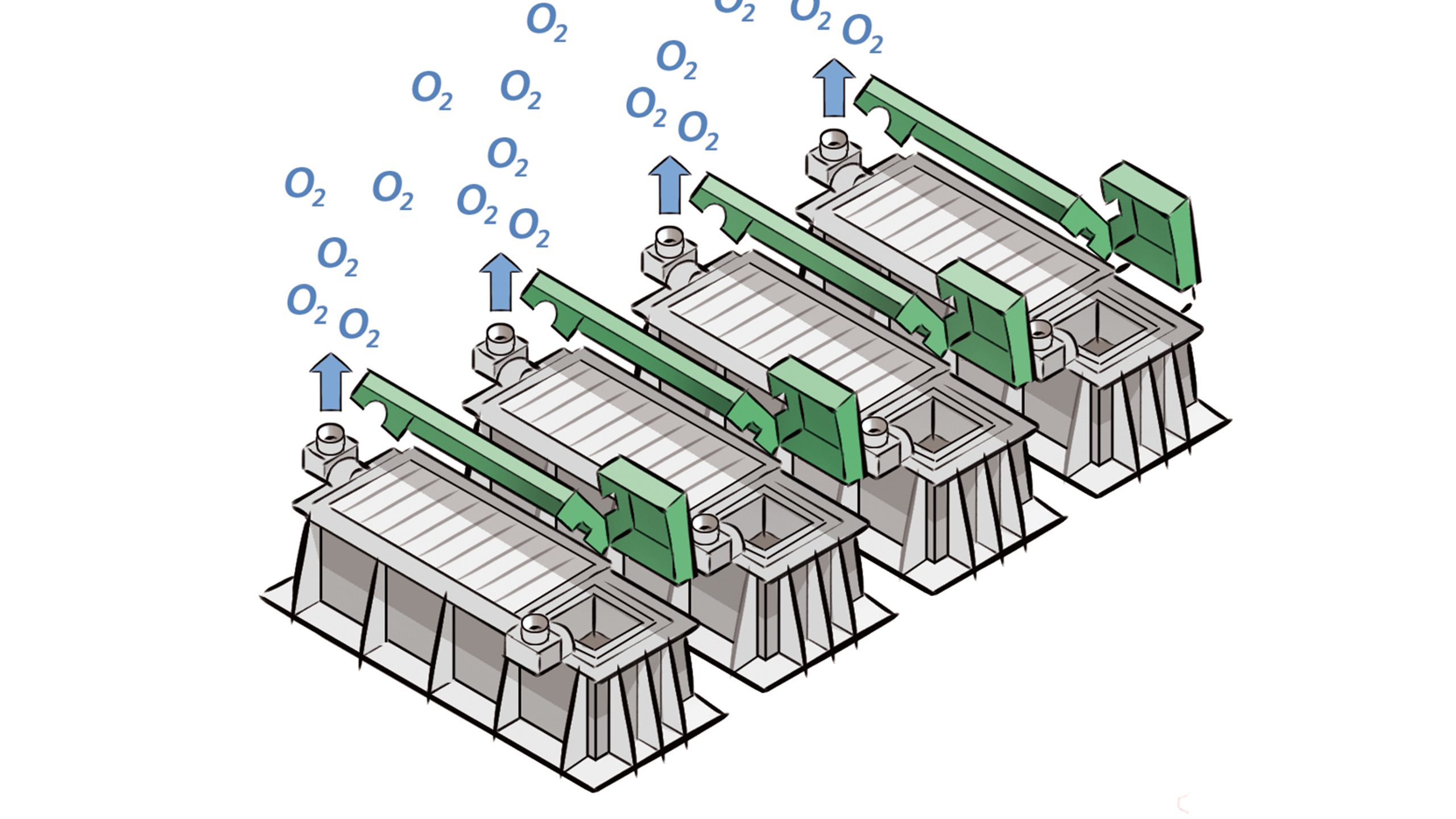TRIMET is the largest German primary aluminium producer. In 3 smelter plants in Germany and 1 in France, TRIMET produces approx. 540,000 t of primary aluminium per year. Aluminium is produced by electrolysis using the so-called Hall-Héroult process, an energy-intensive electrochemical process.
Since the beginning, the process is based on carbon anodes and cathodes. CO2 is emitted by consuming carbon anodes. The goal of this project is to develop a new process with new anode and cathode materials allowing the process to emit only O2 instead of CO2 and lowering the carbon footprint significantly thereby.
Political and industrial context
About 70 Mio. tons of aluminium are produced worldwide each year. The amount is steadily increasing as modern economies rely more on the lightweight metal. The carbon footprint of the aluminium sector is dominated by the energy-intensive electrolysis process. Because most aluminium is produced with electricity generated by coal power plants, energy generation is the biggest contributor to CO2 emission. When supplied with renewable energy the footprint is much lower. Still the process emissions by burning the carbon anodes in the smelting process remain, which account for almost 100 Mio. tons of CO2-equivalents worldwide per year. These direct process emissions can only be abated by implementing an inert anode technology. Here the carbon is replaced by an inert material, which can act as an anode but is not consumed and produces O2 instead of CO2. By this technology aluminium with a very low carbon footprint can be produced. The customer requires green aluminium and the industries goal is to achieve the complex inert anode technology in the future.
Project draft
TRIMET Aluminum SE in cooperation with the Icelandic company Arctus Aluminium Ltd. is developing a breakthrough aluminium process with multiple vertical inert (non-consumable) anodes and cathodes in a low-temperature electrolyte (800 °C) according to the formula:
2 Al2O3 + Energy = 4 Al + 3 Ov.
Thus, oxygen is emitted instead of CO2 since no carbon anodes are used. The inert anode material will be developed in cooperation with the University of Saarland (USAAR). The project aims to scale up the cells developed by Arctus Aluminium to 10,000 A for operation in a pilot plant in TRIMET´s smelter in Essen in Germany with three such cells. This project is supported by funds from the German state North-Rhine Westphalia. After the successful operation of the pilot plant in Essen, the project will be extended by scaling the cells up to commercial size for 170,000 A current in a demonstration plant in TRIMET´s smelter in Essen.
